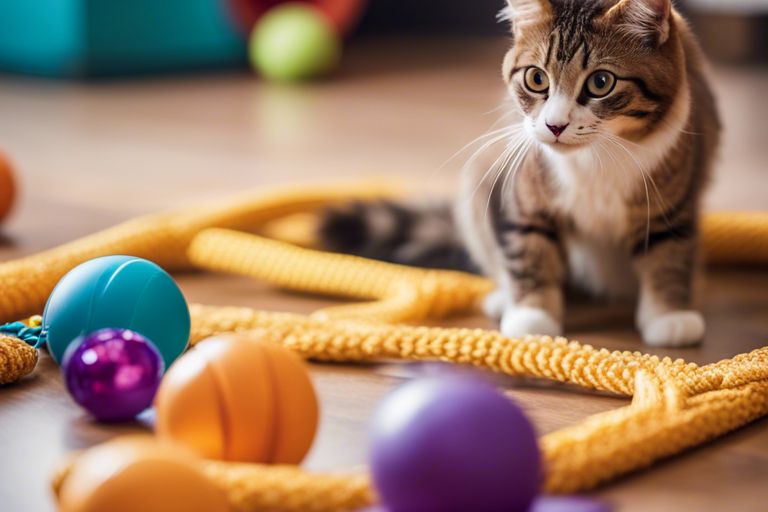Encourage fun and safe playtime for you and your horse with these tips. Establish clear boundaries and rules to ensure everyone’s safety when engaging in activities. Supervise interactions closely, especially with new horses or unfamiliar environments. Use appropriate protective gear such as helmets and boots to prevent accidents. Regularly check and maintain equipment to avoid malfunctions. Prioritize communication and trust with your horse to foster a positive and safe playing environment.


Understanding Horse Behavior
The behavior of horses is deeply influenced by their instincts, past experiences, and environment. By understanding the behavior of your horse, you can better promote safe play and interactions.
Factors That Influence Horse Play
- Instincts: Horses are prey animals with a strong flight response. This instinct can influence their play behavior and reactions to stimuli.
- Environment: The setting in which horses are kept can impact their behavior. Factors such as space, social interactions, and access to resources can all play a role in how horses interact with one another.
- Past experiences: A horse’s past experiences, including training and socialization, can shape their behavior and reactions in various situations.
Perceiving and understanding these factors can help you anticipate your horse’s behavior and foster a safe environment for play.
Recognizing Signs of Aggression and Fear
For you to encourage safe horse play, it’s important to be able to recognize when your horse may be feeling aggressive or fearful. Aggressive behavior in horses can include pinned ears, bared teeth, kicking, or charging. On the other hand, signs of fear may manifest as widened eyes, raised head, and a tense body posture.
Factors such as aggression and fear in horses can pose risks to both the animals involved and the humans around them. By being able to identify and address these behaviors early on, you can help prevent potential conflicts and ensure a safe play environment for you and your horse.
Creating a Safe Environment
While encouraging safe horse play, it is necessary to create a secure environment that minimizes risks and ensures the well-being of both the horses and the riders.
Tips for Designing a Secure Paddock or Arena
With your horse’s safety in mind, ensure that your paddock or arena is properly fenced with durable materials that are tall enough to prevent horses from jumping over. Regularly inspect the fencing for any loose boards or protruding nails that could pose a danger to your horse. Additionally, make sure there are no sharp edges or corners that horses could injure themselves on, and remove any debris or clutter that might cause accidents. Finally, provide adequate space for your horse to move freely without feeling confined.
- Regularly inspect the fencing for any damage
- Ensure there are no sharp edges or corners
- Remove any debris or clutter
- Provide adequate space for movement
Though creating a safe environment requires effort, it is crucial for the well-being of your horse and the success of your play sessions.
How to Remove Hazards and Obstacles
You should regularly inspect your horse’s environment for any potential hazards or obstacles that could lead to accidents. Remove any toxic plants, low-hanging branches, or loose wires that your horse could get tangled in. Ensure that the ground is level and free of potholes or other tripping hazards to prevent injuries. By removing these obstacles, you can create a safer environment for your horse to play freely and without risk.
The Importance of Adequate Fencing
If your horse tends to be playful and energetic, having secure and adequate fencing is necessary to prevent escapes and injuries. Strong fencing not only keeps your horse safely contained within your property but also prevents them from wandering into dangerous areas. Additionally, proper fencing can help keep out unwanted visitors or animals that could startle or harm your horse.
If your horse is prone to testing boundaries, investing in high-quality fencing can provide your horse with the security they need to play and roam without the risk of escaping or getting into trouble.
Supervising Horse Play
For safe horse play, proper supervision is imperative to ensure the well-being of the animals involved. Being aware of horse behavior and knowing when to intervene is crucial in preventing accidents and injuries.
How to Monitor Horse Behavior and Intervene When Necessary
With close observation, you can learn to recognize signs of aggression, fear, or discomfort in horses during play. **It is important to step in when you notice escalating tension, aggressive posturing, or dangerous behavior**. By redirecting their attention or separating them temporarily, you can prevent potential conflicts and keep the playtime safe for all horses involved.
Strategies for Managing Multiple Horses at Play
There’s no denying that managing multiple horses during playtime can be challenging. **Establishing clear boundaries and rules from the start can help prevent misunderstandings and conflicts**. Position yourself in a way that allows you to oversee all horses involved and be ready to intervene if necessary.
Horse behavior can be unpredictable, especially when they are in a group. **Keeping a close eye on their body language and vocalizations can give you clues about their intentions and emotions**. By creating a harmonious environment and setting clear expectations, you can help facilitate safe and enjoyable horse play.
The Role of Human Supervision in Preventing Accidents
Horses rely on your guidance and supervision to ensure their safety during playtime. **By actively monitoring their interactions and reactions, you can prevent potentially dangerous situations from escalating**. Be prepared to step in decisively if you sense any signs of aggression or discomfort among the horses.
**Your presence and attentiveness play a crucial role in maintaining a secure environment for horse play**. By being proactive and responsive to their behavior, you can create a positive and safe experience for both you and your horses.

Teaching Safe Play Habits
How to Reward Good Behavior and Discourage Bad
To encourage safe horse play, it is crucial to clearly communicate your expectations to your horse. When your horse engages in safe play behaviors, such as gentle nudging or respectful interaction with other horses, reward them with praise, treats, or extra attention. On the contrary, if your horse displays aggressive or dangerous behavior during play, such as kicking or biting, it is crucial to discourage this behavior immediately. You can do this by providing a firm vocal command, interrupting the behavior, and redirecting your horse’s focus onto a different activity.
Factors to Consider When Introducing New Horses to a Herd
One of the key factors to consider when introducing new horses to a herd is the temperament of the existing herd members. It’s important to observe how each horse interacts with others and to introduce the new horse gradually to the herd to prevent any conflicts or aggression. Age is another crucial consideration, as younger horses may need more time to adjust to the dynamics of a new herd. Knowing the individual personalities and social hierarchy within your herd can help you make informed decisions when introducing a new member.
- Temperament of existing herd members
- Age of the new horse
- Individual personalities and social hierarchy within the herd
The Importance of Consistent Training and Reinforcement
With some horses, consistency is key to ensuring safe play habits and behaviors. By establishing clear boundaries and expectations from the beginning, your horse will learn what is acceptable during playtime. Regular training sessions focused on positive reinforcement can help solidify these behaviors and strengthen the bond between you and your horse. Another important aspect of consistent training is reinforcement. By consistently rewarding safe play habits and gently correcting unsafe behaviors, you can help your horse understand what is expected of them.
- Establishing clear boundaries
- Regular training sessions
- Reinforcement of safe play habits
Managing Risk Factors
Despite the many benefits of allowing horses to play and interact freely, it is important to be aware of potential risks that could affect their health. By managing these risk factors effectively, you can create a safe environment for your horses to engage in playful behavior.
How to Identify and Mitigate Health Risks in Horses
Assuming the responsibility of caring for horses means being vigilant about their health. Regularly monitor your horses for signs of illness or injury and take swift action if you notice any concerning symptoms. Implement preventive measures such as vaccinations and parasite control to reduce the risk of health issues.
Strategies for Preventing Injuries and Illnesses
Even with the best precautions in place, accidents can still happen when horses are playing. It’s crucial to establish safe play areas with secure fencing and remove any hazards that could potentially cause harm. Additionally, providing proper nutrition and regular exercise can help maintain your horse’s overall health and well-being.
This approach will not only reduce the likelihood of injuries but also contribute to the longevity and happiness of your horses.
The Importance of Regular Veterinary Check-Ups
On top of preventive measures, regular veterinary check-ups are vital for monitoring your horse’s health status. Veterinarians can detect any underlying health issues early on and provide treatment before they become more serious.
Identify any potential health concerns and address them promptly with the help of a qualified veterinarian to ensure your horse remains in optimal health.

Encouraging Positive Interactions
Tips for Fostering Friendly Relationships Between Horses
Your horses can have positive interactions when you provide a conducive environment. Here are some tips to help you foster friendly relationships between your horses:
- Introduce new horses gradually to prevent conflicts.
- Allow horses to socialize in turnout areas to build bonds.
- Provide enough space and resources, so horses don’t feel the need to compete.
Knowing your horses’ personalities can also help in pairing compatible companions.
How to Encourage Socialization and Reduce Stress
Any horse can benefit from social interactions to reduce stress and anxiety. An engaged social life is crucial for the well-being of horses. Regular turnout with compatible companions can help horses develop social skills and reduce stress levels.
The Benefits of Providing Enrichment Activities
Little horses benefit greatly from enrichment activities that stimulate their minds and bodies. To keep your horses mentally and physically healthy, consider providing activities such as puzzle feeders, toys, and obstacle courses. Enrichment activities can prevent boredom and reduce stereotypic behaviors in horses.
Summing up
Considering all points, you can encourage safe horse play by providing a suitable environment, setting clear boundaries, and always supervising interactions. By ensuring the safety of both the horse and the humans involved, you can create a positive and enjoyable experience for everyone.
Remember that safety should always be a top priority when working with horses, no matter the age or experience level of the individuals involved. By following these guidelines, you can help promote safe horse play and reduce the risk of accidents or injuries.
Q: Why is it important to encourage safe horse play?
A: It is important to encourage safe horse play to prevent accidents and injuries to both the horse and rider. By promoting safe practices, you can create a positive and enjoyable experience for everyone involved.
Q: What are some tips for promoting safe horse play?
A: Some tips for promoting safe horse play include always wearing proper safety gear such as helmets and boots, ensuring that the horse is properly trained and socialized, and setting boundaries and rules for interactions with the horse.
Q: How can I create a safe environment for horse play?
A: To create a safe environment for horse play, make sure the area is free of hazards such as loose wires or sharp objects, provide adequate space for the horse to move around, and ensure that all equipment is well-maintained and in good condition.
Q: What are some common safety risks to be aware of when engaging in horse play?
A: Some common safety risks to be aware of when engaging in horse play include kicking, biting, spooking, and falling off the horse. By being aware of these risks and taking proper precautions, you can minimize the chances of accidents occurring.
Q: How can I educate others about the importance of safe horse play?
A: You can educate others about the importance of safe horse play by leading by example and following safety guidelines yourself, sharing resources and information about safe practices, and encouraging open communication about safety concerns within the horse community.










